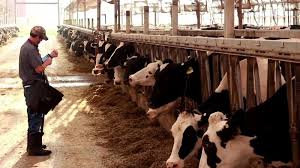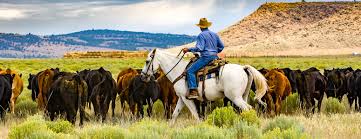The system of managing farm animals largely depends on the intended scale of production, the farmer’s convenience, financial capacity, and the availability of physical resources like land and pasture.
Traditional farmers generally manage animals on a free-range basis, which is inexpensive and requires minimal care, allowing more time to focus on crop production.
However, advanced and capital-intensive livestock management systems have evolved to meet the increasing human demand for animal protein, rising living costs, and urbanization.
Read Also: 14 Medicinal Health Benefits of Epimedium grandiflorum (Horny Goat Weed)
Four Systems of Managing Farm Animals in Nigeria

1. Nomadic Herding
This is the first and oldest system of managing farm animals. It involves the movement of animals by herders from one place to another in search of water and pasture. In this system, animals are exposed to various natural hazards, leading to low productivity.
Droppings from the animals cannot be effectively used as organic fertilizer for crops because of the animals’ constant movement. Additionally, the animals tend to overgraze pastures and damage farmlands in their path. Despite these disadvantages, nomadic herding is simple and inexpensive to practice.
2. Free Range System
In this system, the farmer resides in one location, while livestock (primarily cattle, sheep, and goats) are allowed to roam freely, sometimes under the supervision of a herdsman. Occasionally, animals are fed with farm or kitchen waste, but little additional feed or care is provided.
The cost of production is low in terms of labor and financial investment, but stock quality and productivity are also low. Animals are exposed to hazards, similar to nomadic herding, resulting in high losses and poor reproductive rates. This system, though traditional and inefficient, remains widely practiced in many rural areas.
3. Semi-Intensive System
This system is a combination of free-range and intensive livestock management. In this case, farm animals are kept indoors part of the time, where they are fed regularly. They are also allowed to graze outdoors in designated pastures known as paddocks. This system balances indoor feeding with outdoor grazing.
4. Intensive System
The intensive system is the opposite of nomadic herding. In this system, farm animals are kept indoors all the time, and they are managed using scientific techniques, such as maintaining optimal temperature, balanced feeding, and precise management practices, to ensure maximum efficiency and output.
While this system is expensive and labor-intensive, it can be very profitable if managed properly. A typical example of intensive livestock management is the battery cage system used in poultry production.
Read Also: Poultry Record Keeping and Performance Evaluation
Ranching

Ranching involves the practice of raising grazing livestock such as cattle and sheep for meat or wool. It can also be used to raise less common livestock such as elk, American bison, ostrich, and emu. A ranch is an area of land set aside primarily for livestock raising. Ranches generally cover large areas, but can vary in size.
Some ranches may also grow crops, such as hay and grains, for feeding the animals. Dude ranches, which cater to tourists, offer activities like horseback riding, cattle drives, and guided hunting. Ranchers, also called stockgrowers, are individuals who own or manage ranches.
At the end of this article, the systems of livestock management have been explained, ranging from the traditional method of nomadic herding across ecozones, to a combination of indoor and outdoor care in semi-intensive systems, and finally to the highly scientific and specialized methods of ranching and intensive animal production.
Do you have any questions, suggestions, or contributions? If so, please feel free to use the comment box below to share your thoughts. We also encourage you to kindly share this information with others who might benefit from it. Since we can’t reach everyone at once, we truly appreciate your help in spreading the word. Thank you so much for your support and for sharing!

